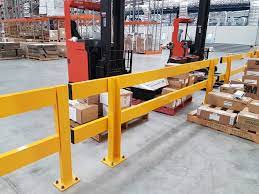In construction and renovation projects, meticulous planning is crucial to ensure seamless execution and adherence to building regulations. A well-structured door schedule plays a pivotal role in this process by detailing the specifications, dimensions, and placement of all doors within a building. This comprehensive document serves as a vital communication tool among architects, contractors, and fabricators, streamlining workflows and minimizing errors.
Understanding the Role of a Door Schedule
A door schedule is an organized list that provides detailed information about each door in a construction project. It typically includes:
- Door Identification: Assigns unique numbers or identifiers to each door for easy reference.
- Location Details: Specifies the exact placement of doors within the building, correlating with floor plans.
- Dimensions: Lists precise measurements, including height, width, and thickness.
- Material Specifications: Indicates the materials used for both doors and frames.
- Hardware Components: Details the type of hinges, locks, handles, and other hardware elements.
- Fire Ratings and Safety Features: Notes any fire resistance ratings or additional safety requirements.
By consolidating this information, a door schedule ensures that all stakeholders have a clear understanding of the project’s requirements, facilitating coordination and reducing the likelihood of discrepancies.
Benefits of Effective Door Scheduling
Implementing a detailed door schedule offers several advantages:
- Enhanced Communication: Provides a common reference point for all parties involved, ensuring alignment and clarity.
- Error Reduction: By specifying exact requirements, it minimizes misunderstandings and construction errors.
- Regulatory Compliance: Ensures that door installations meet building codes and safety standards.
- Efficient Resource Management: Assists in accurate procurement of materials and scheduling of labor, optimizing resource allocation.
Leveraging Specialized Tools for Door Scheduling
To optimize the door scheduling process, utilizing specialized software can be highly beneficial. For instance, RapidSpec offers a Door Manufacturing Software that simplifies the creation of accurate door schedules. This tool enables users to input data systematically, with built-in checks to ensure precision. It automatically generates scaled, detailed, and dimensioned door set drawings, enhancing both efficiency and accuracy. Such software reduces the time required for data entry and minimizes errors, allowing estimators to focus more on pricing and client engagement.
Conclusion
Efficient door scheduling is integral to the success of construction projects, ensuring that every door is correctly specified and installed. By detailing specifications, dimensions, and placements, it streamlines communication among project stakeholders, reduces errors, and ensures compliance with building regulations. Incorporating specialized tools like RapidSpec’s Door Manufacturing Software can further enhance the process, saving time and improving project outcomes. Ultimately, a comprehensive door schedule is a cornerstone of effective construction planning and execution.




